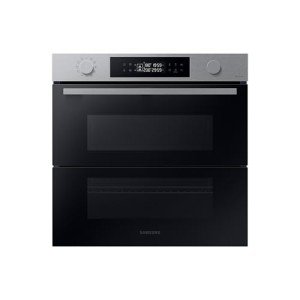Ask Me Anything: 10 Responses To Your Questions About Oven Built In

The Rise of Built-In Ovens: A Seamless Approach to Modern Cooking
In contemporary kitchen areas, where style aesthetics blend perfectly with performance, one home appliance stands apart as a true game changer: the built-in oven. As house owners and chefs alike continue to look for ingenious services that improve their cooking experience, built-in ovens have actually ended up being increasingly popular. This short article checks out the advantages, considerations, and trends surrounding built-in ovens, highlighting why they are a necessary feature in modern-day cooking spaces.
What is a Built-In Oven?
A built-in oven is a cooking area home appliance created to be integrated into the cabinetry of a cooking area rather than standing alone. Unlike standard freestanding ovens, which can be moved and placed anywhere, built-in ovens come in different styles and sizes to fit particularly within designated areas. Available in single or double setups, these ovens use a structured look that matches modern-day kitchen area designs.
Advantages of Built-In Ovens

1. Space-Saving Design
Among the most attractive benefits of built-in ovens is their space-saving design. By integrating the oven into cabinetry, you can release up important counter and flooring space. This is particularly beneficial in smaller cooking areas, where taking full advantage of room is essential. Built-in ovens can be set up at eye level, making them more accessible and decreasing the need to flex down.
2. Aesthetic Appeal
Built-in ovens add to a smooth and cohesive kitchen area style. Offered in various finishes-- such as stainless steel, black, white, and customized cabinets-- they can mix flawlessly into the total design. This visual appeal improves the kitchen's visual harmony and elevates the area, developing a contemporary and advanced atmosphere.
3. Improved Functionality
Many built-in ovens come geared up with sophisticated cooking innovations, such as convection cooking, steam ovens, and wise functions. These improvements allow for flexible cooking choices, making it simpler to accomplish professional-level outcomes in your home. Smart built-in ovens can even connect to Wi-Fi, making it possible for users to control the oven remotely, get alerts, and access a range of cooking programs and recipes.
4. Enhanced Ventilation
Because built-in ovens can be integrated with kitchen area hoods and ventilation systems, they can help keep better air quality and lower cooking odors. This is especially significant for those who like to prepare with aromatic spices and components, as an efficient ventilation system can keep the kitchen area comfortable and inviting.
5. Customization Options
Built-in ovens use a vast array of modification alternatives to suit individual cooking styles and requirements. From professional-grade appliances with several cooking modes to compact styles for smaller sized kitchen areas, homeowners can select the oven that fits their particular requirements. Many makers likewise provide adjustable front panels, permitting you to match the oven's appearance to your cabinetry for a truly combined look.
Considerations When Choosing a Built-In Oven
While built-in ovens have many advantages, there are necessary factors to consider to keep in mind before buying:
1. oven integrated -in ovens usually include a greater cost than their freestanding equivalents due to their style and setup requirements. It's important to consider both the expense of the oven and any extra expenses related to cabinets adjustments or setup.
2. Installation Requirements
Installing a built-in oven typically requires expert assistance, specifically if you need to customize existing cabinets. Guarantee that you think about any expenses connected with setup, consisting of labor and possible cabinets modifications.
3. Size and Dimensions
Before purchasing a built-in oven, measure the designated space precisely to ensure a proper fit. Built-in ovens come in numerous sizes and configurations, so picking one that lines up with your needs and kitchen area design is vital.
4. Way of life and Usage
Consider your cooking practices and requires when selecting a built-in oven. If you regularly host large events, a double oven may be more useful. On the other hand, if you have a compact cooking area, a single-wall oven may be enough.
Trends in Built-In Ovens
The cooking area home appliance market is continuously progressing, and built-in ovens are not exempt from emerging patterns. Some present trends include:
Smart Technology Integration: With the rise of smart home innovation, built-in ovens now typically feature connection choices. This permits users to monitor cooking development and adjust settings through mobile apps.
Energy Efficiency: As sustainability becomes a top priority, many producers are purchasing energy-efficient built-in ovens that lower energy usage while maintaining performance.
Multi-functional Designs: Built-in ovens now offer features such as air frying, slow cooking, and steaming, providing versatility that satisfies a wide variety of cooking techniques.
Conclusion
Built-in ovens undoubtedly represent a perfect mix of design, function, and convenience in today's cooking areas. As more house owners select this contemporary option, the focus moves to producing a cooking area that is as visually pleasing as it is useful. Whether you are constructing a brand-new home or remodeling your cooking area, thinking about a built-in oven could raise your cooking experience and change your kitchen area into an elegant and practical sanctuary. With a selection of options available and continuous innovations in innovation, built-in ovens remain a standout choice for both newbie cooks and culinary lovers alike.
